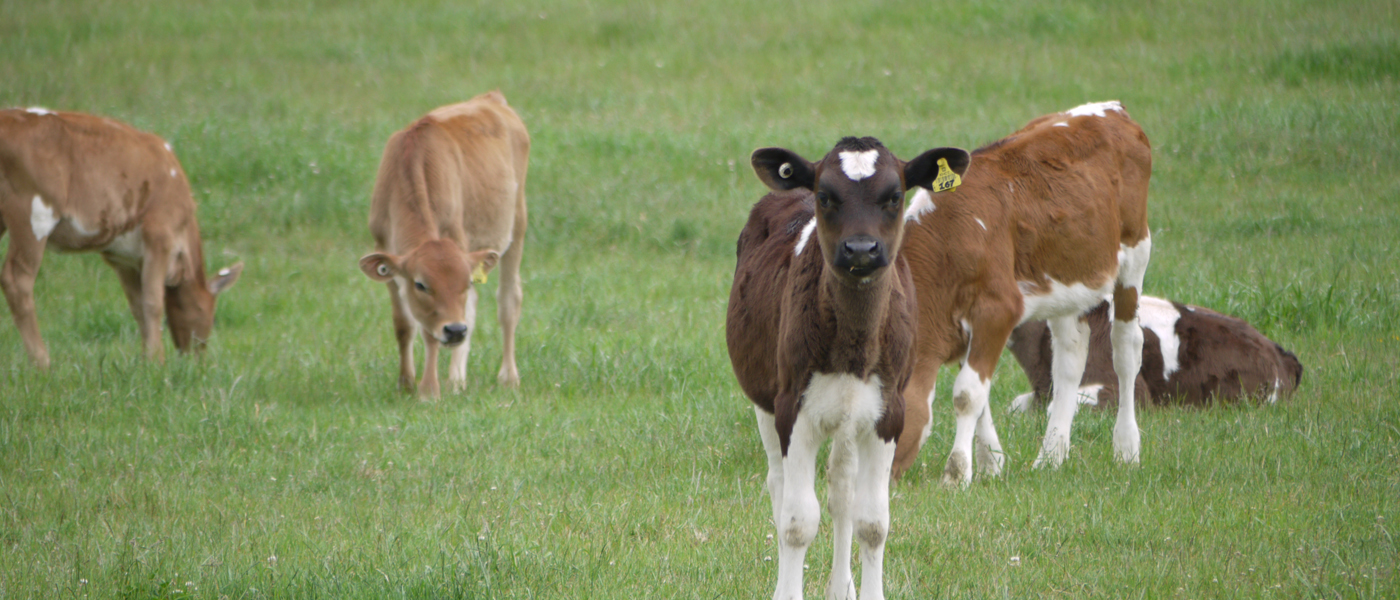
Ensuring optimum animal health in youngstock going into the autumn period can help maintain growth rates, hit liveweight targets for mating and minimise illness and disease. At this time of year, it is important to consider all aspects of health and feeding. Health issues of importance include parasitism, yersinia and trace element deficiencies. Feeding will also have a large impact on maintaining growth rates so that targets are hit.
Internal and external parasites like the cooler autumn weather. Temperatures at this time of year do not tend to dip low enough to kill the eggs or larvae on the pasture, and there is still enough moisture around that eggs and larvae survive well in the environment. Cooperia, particularly, tend to have a seasonal prevalence around autumn and can be present in large numbers at this time of year. They are resistant to a number of actives, so it would pay to talk to your vet to find out which drench is most appropriate for this class of stock. Clinical signs of roundworm burden include diarrhoea or loose stools, lowered growth rates and/or general ill thrift. Lungworm also tend to survive well at this time of year, which means that pasture contamination rates can be high. Clinical signs of lungworm include coughing and increased respiratory rate which may progress to difficulty breathing, weight loss and death in severe cases. We would recommend that if you see any of these clinical signs you talk with your vet about some potential causes and treatment options.
Yersinia is another illness that prevails during the cooler months of autumn. It is a sporadic disease that usually affects individual animals, however it can also cause outbreaks. It is caused by a bacteria and generally affects animals between 6-12 months of age. The infection results in a mild to severe scouring, depression, and dehydration. Animals may also present with poor growth rates or wasting. The disease is treatable and normally coincides with stressful events (eg yarding, climatic changes or transport), concurrent disease or trace element deficiencies. Minimising the impact of predisposing factors can help to reduce the chance of illness. Luckily, treatment with appropriate antibiotics and removing the stressors will resolve the infection quickly.
Trace element deficiencies are very common throughout the Canterbury and North Otago regions and can affect growth rates and levels of immunity. Common trace elements that are important in growing stock include copper, selenium and Vitamin B12. It is important to have a discussion with your vet to find out if your current supplementation programme is adequate for your requirements and your region.
Nutrition is a key component of ensuring growth rates are maintained. Feed type, quality and quantity are very important aspects to consider. It is important to maintain reasonable growth rates in autumn to ensure that the youngstock reach target mating weights. Many of the crops fed over the autumn and winter period have potential issues and/or limitations, so it is important to know what these are to mitigate any potential problems. The most common crops fed over the Canterbury/North Otago region include grass, kale and fodder beet.
Ensuring animals are well cared for and fed over the autumn period will assist with minimising disease and illness and help to maintain growth rates. It would be advisable to regularly review your drench programmes and trace element supplementation to safeguard against potential deficiencies or issues.
Susan Geddes Vetlife Oxford